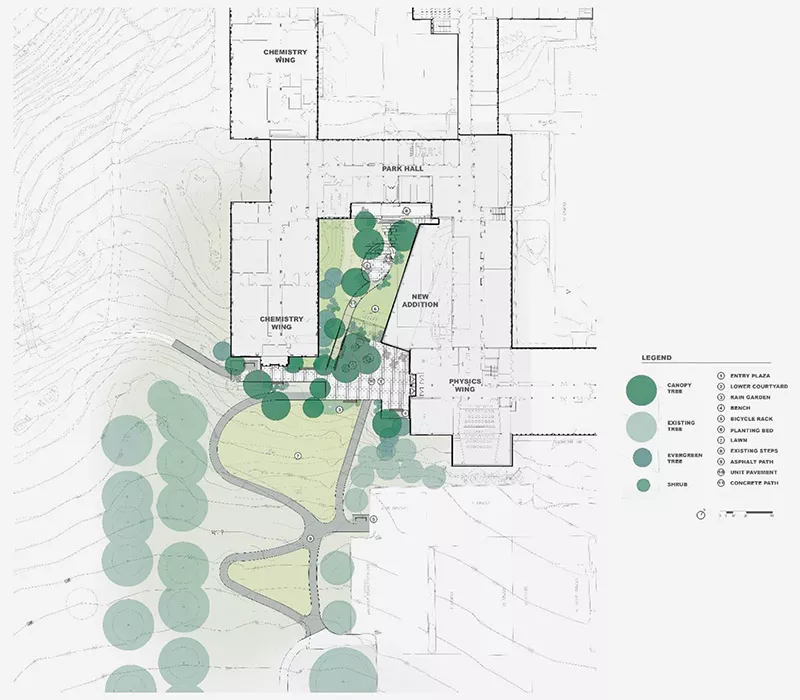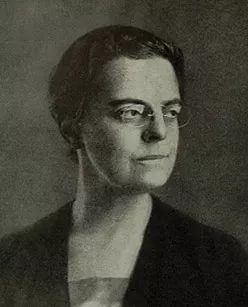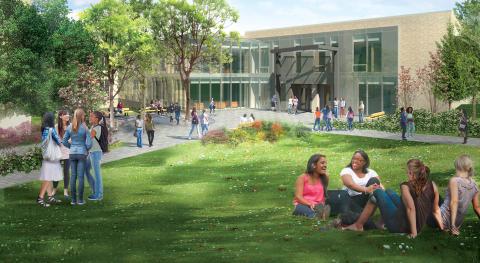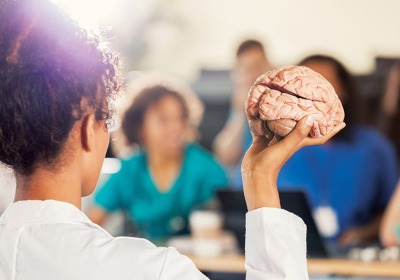More Than a Makeover
Park Science Center is renovated, expanded, and reimagined.
Work has begun on a major project to reimagine Park Science Center. The two-phase renovation includes a 10,000-square-foot addition and is designed to reinvigorate Park as a collaborative learning center with technology-rich classrooms and labs.
Phase I, budgeted at $21 million and slated to end in fall 2018, includes:
- A new modern physics lab with all-new equipment and small “roomettes” for controlled experiments
- A fully renovated electronics lab
- A two-story learning commons, including new technology for faculty/student collaboration
- An enhanced public space called The Science Crossroads that will feature state-of-the-art technology and video for science on display and also enhance circulation within the building
- Nine student study and seminar rooms equipped with technology, blackboards, and whiteboards
- Upgrades to seven classrooms and lecture halls
- A new computer science teaching laboratory
Have You Heard of These Bryn Mawr Trailblazers in Science?
Nettie Maria Stevens, Ph.D. 1903 (1861–1912) discovered the XY chromosome system. A late-in-life scientist, she earned her Ph.D. at the age of 42.
Florence Bascom (1862–1945) created Bryn Mawr’s geology department. American Men of Science voted her one of the top 100 geologists in 1906.
Emily Noether (1882–1935) developed work that led to a body of principles unifying algebra, geometry, linear algebra, topology, and logic.
Hilda Geringer (1893–1973) taught at Bryn Mawr in the early 1940s and is known for her pioneering work on the mathematical basis of Mendelian genetics.
Katharine Burr Blodgett, Class of 1917 (1898–1979), was Cambridge’s first woman physics Ph.D. recipient and a G.E. researcher on monomolecular coatings for eyeglasses, lenses, aircraft deicing, etc.
Lilli Schwenk Hornig ’42 (1921–2017), one of the only women scientists at Los Alamos, worked on plutonium chemistry and high-explosive lenses.
Katharine Blodgett Gebbie ’54 (1932–2016) founded the National Institute of Standards and Technology's Physical Measurement Lab, where she mentored four Nobel physicists.
Candace Beebe Pert ’70 (1946–2013), a neuroscientist and pharmacologist, discovered the opiate receptor that binds endorphins in the brain.
Who was Marion Edwards Park?
Park became Bryn Mawr’s third president after having served as dean at both Simmons College and Radcliffe College. During her presidency, she led efforts to enrich the College’s curriculum, particularly in the areas of the fine arts, history of architecture and arts, and archeology. She also initiated Bryn Mawr’s cooperative programs with Haverford, Swarthmore, and the University of Pennsylvania.
The Great Depression, rise of fascism, and beginning of World War II created many challenges, but Park provided steady, optimistic leadership throughout, notably joining with other U.S. institutions to employ refugee scholars from European universities.
A scholar in the fields of Classics and English, Park earned her A.B. (1898), M.A. (1899), and Ph.D. (1918) from Bryn Mawr. As a student, she received the College’s European Fellowship and used it to attend the American School of Classical Studies in Athens, Greece.
Learn More About the Project
STEM at Bryn Mawr
- Bryn Mawr College awards approximately three times the national average for degrees awarded to women in STEM.
- In 2013, Bryn Mawr became the first women’s institution to work with the Posse Foundation to recruit a STEM Posse.
- From 2013–2015, 11 percent of Bryn Mawr students majored in math, 14.6 times the national average for women.
- Math and Biology are the top majors declared by current juniors and seniors.
- The natural sciences comprise 33 percent of all majors declared by current juniors and seniors.
- Bryn Mawr's postbaccalaureate premedical program is one of the nation’s oldest with a consistent medical school acceptance rate of more than 98 percent.
Published on: 12/16/2017



